Apple invented the tablet market with the iPad in 2010. It also reinvigorated the laptop market with the evolution of its MacBook over the last 20 years. So why has it seemingly tried to meld the two with the iPad Pro?
Can this new 12.9-inch version replace your laptop? Does Apple even want it to? It largely depends on what you need it for. If you watch TV and surf the web: yes. If you work with desktop operating systems and need it to replicate that experience: no.
It leaves me at pains to rate what is a fine product. It is too expensive for most casual consumers but could be ideal for digital illustrators and aspiring creative professionals with deep pockets who want a second device. Yet, it is a dream to fire up Netflix on, and with the right keyboard is great to word process with.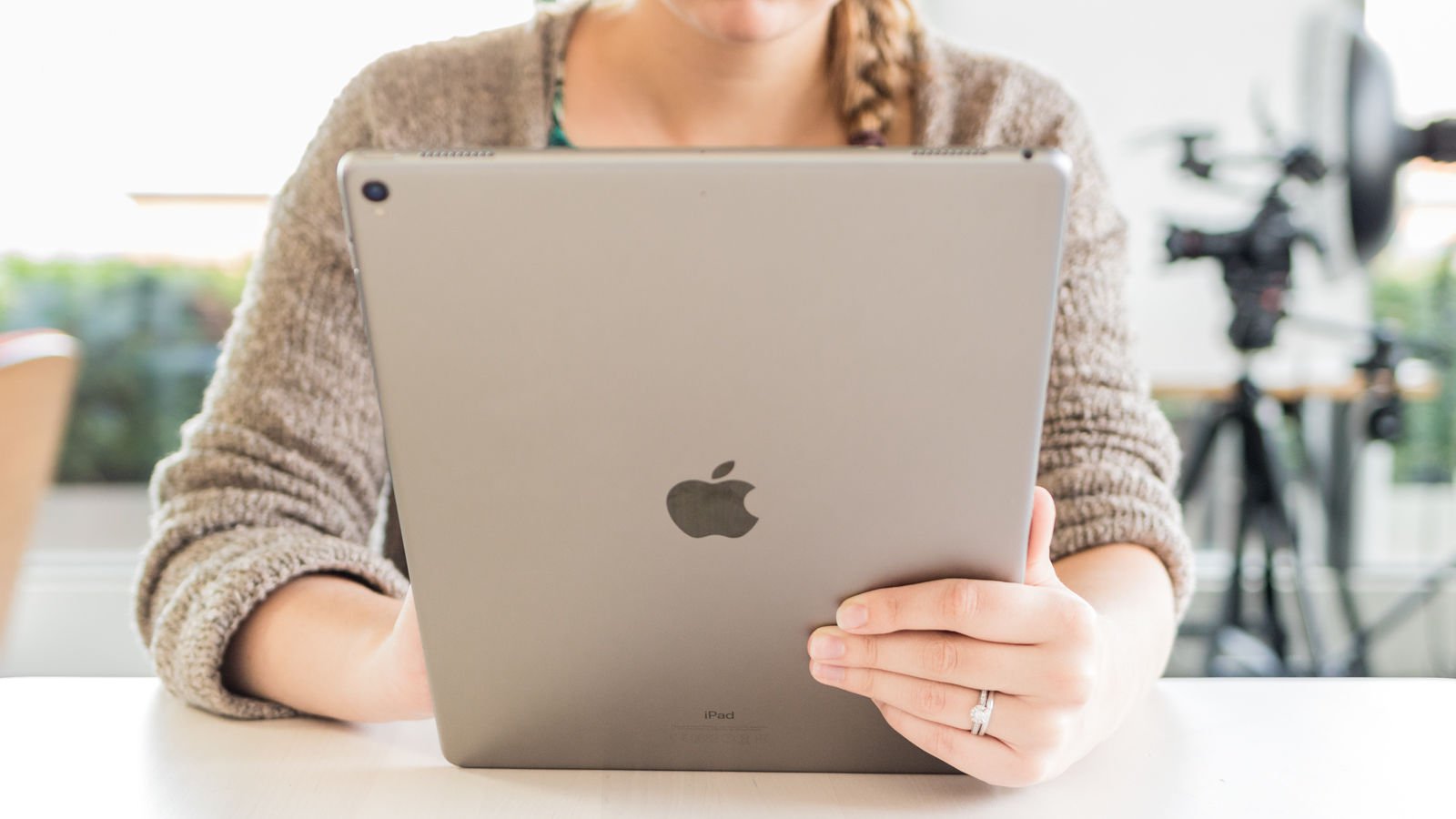
So is it overkill? Maybe. Some problems remain with iOS and even though Apple has moved away from the replace-your-laptop marketing, it is an OS that feels limited when you try to do everything on it, even with the keyboard and Pencil.
But the hardware is beautiful, and Apple has always known how to provoke lust for its products. Consider me torn. Read next: iPad Pro 10.5in (2017) vs iPad Pro 12.9in (2017)
Price and availability
The 12.9-inch iPad Pro can be bought directly from Apple from £769. That price gets you an acceptable 64GB storage and Wi-Fi only connectivity.
It is also available at a discount from certified Apple Reseller KRCS.
You can get it in Space Grey, Silver or Gold, but not the coveted Rose Gold (that’s reserved for its 10.5-inch brother).
It’s a product that you could pay up to £1,169 for if you need 512GB storage and the option for a 4G SIM plan. You can also opt for 256GB.
No combination of pricing, colour and connectivity comes with the Smart Keyboard or Pencil. They cost £169 and £99 respectively; the cheapest 12.9-inch iPad Pro set of all three costs £1,037.
If you have the money and 12.9 inches isn’t too big a display for you, then it’s just about worth the dough. But you might prefer the surprisingly compact 10.5-inch iPad Pro that has very similar internal specs.
Design and build
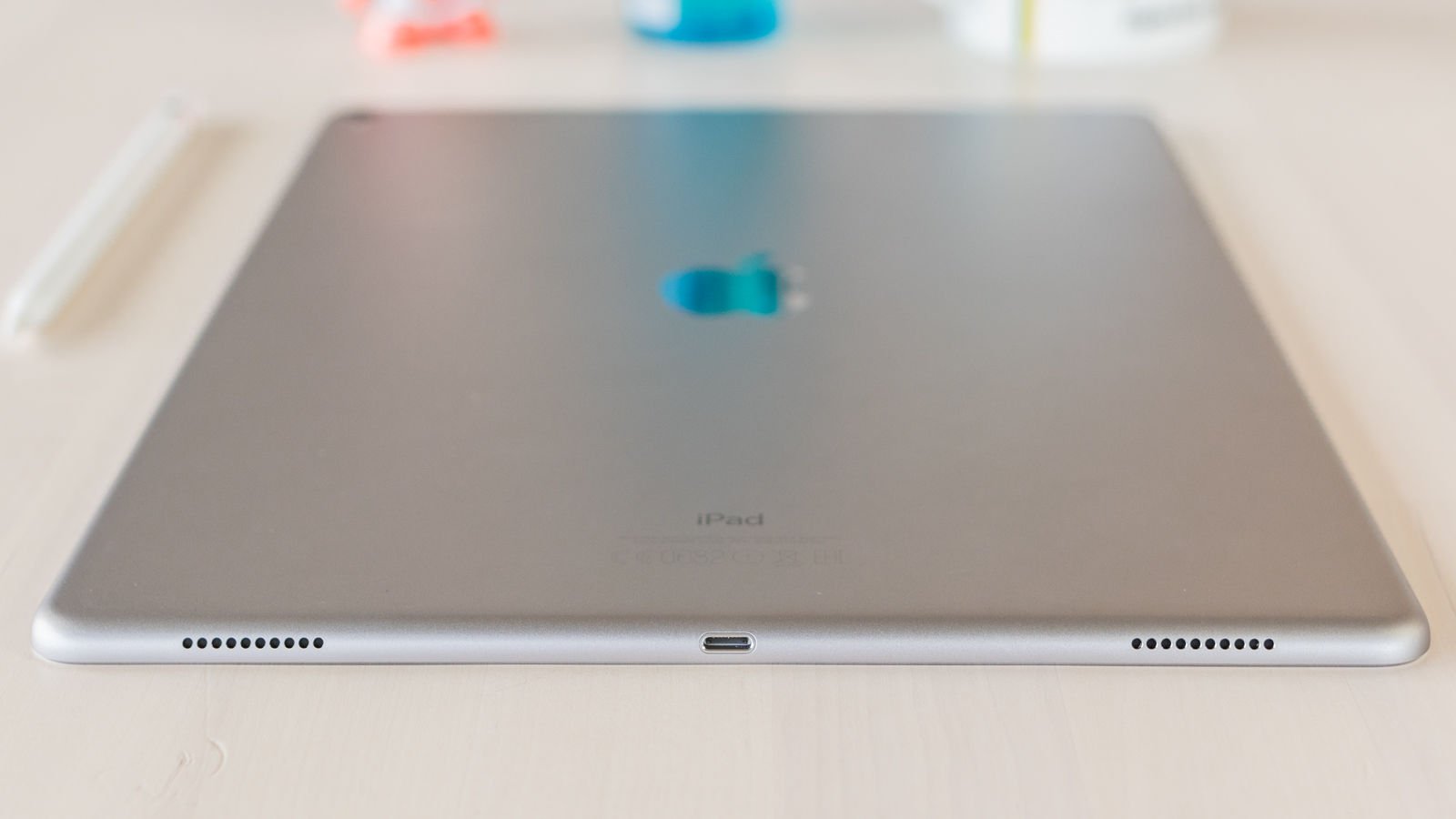
The iPad’s design has come a long way in seven years. Compared to older models, the 12.9-inch Pro is comically large and isn’t a device you’ll be comfortable using with one hand to read on. But this isn’t an iPad aimed at the casual reader of news or browser of web. Though it does those things with aplomb thanks to the expansive Retina display that’s bigger than the smallest MacBook’s.
The design remains largely unchanged from the 2015 model that introduced the world to the mega-Pad. The external design is identical, with a pleasingly clean look and feel that recalls Steve Jobs’ love of the Bauhaus movement in its minimalism.
It’s my favourite iPad in this sense despite its size, with only a Touch ID button, power/lock button and volume keys on the chassis (plus a nano-SIM tray on cellular models).
Aside from these, there’s a Lightning port, 3.5mm headphone jack and four speaker grilles. The Apple logo on the rear is reflective aluminium and the weight of the device, while not the most shoulder-bag friendly, has a reassuring heft behind it.
The camera, now the same as on the iPhone 7, has the tiniest of bumps to it but does not cause the whole unit to rock when on a table, which is good news for drawing and note taking with the Pencil, or just typing onto the screen.
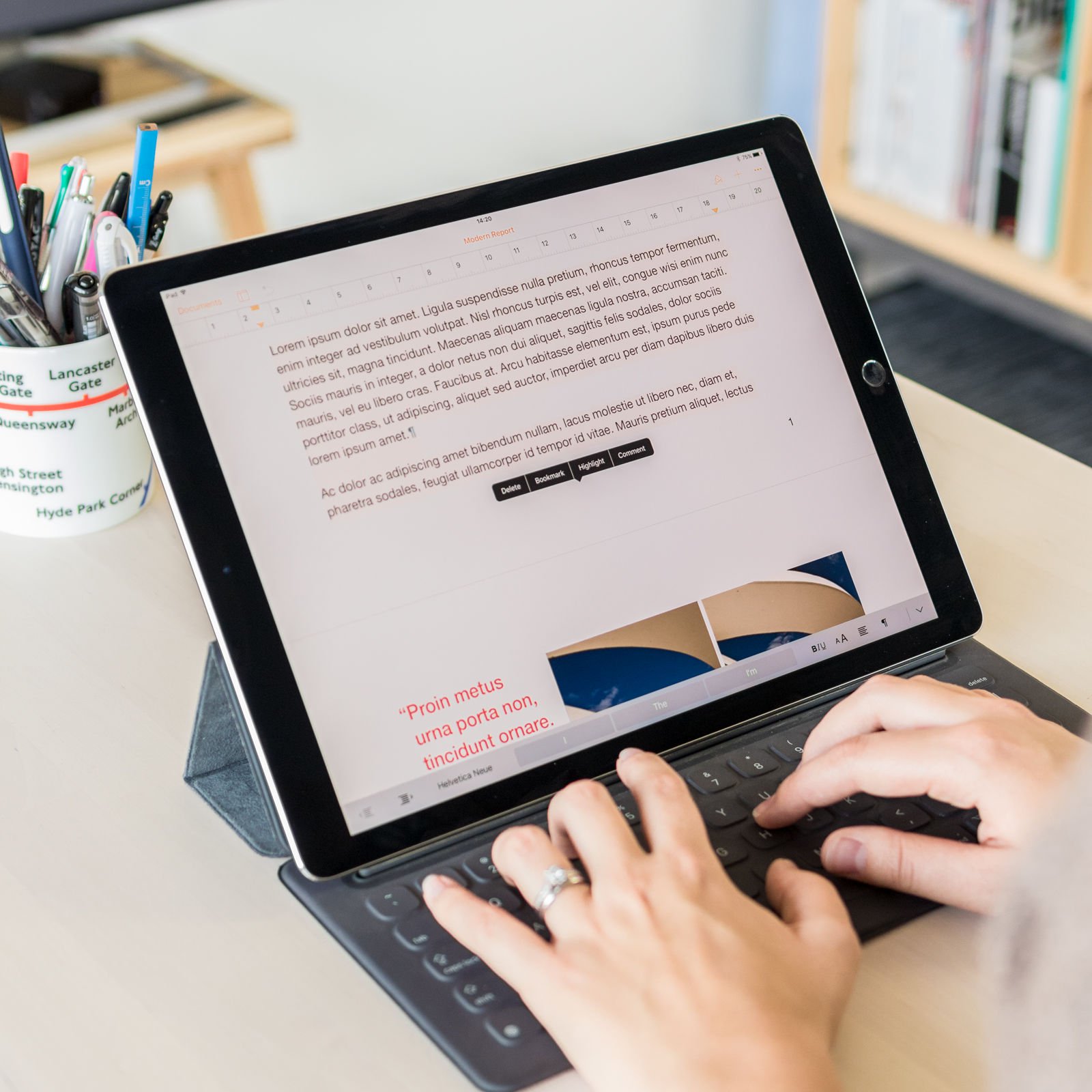
The tablet is undoubtedly unwieldy, even with two hands. It works well docked with Apple’s Smart Keyboard that frustratingly does not come in the box. You’ll want it though, as it is very slim and adds little bulk to the unit while adding the benefits of a stand as well as keyboard.
They keyboard is powered directly from the iPad via the three pin Smart Connector and is fool proof in its operation. It means the keyboard needn’t have its own battery or even rely on Bluetooth for connection. For illustrators and designers (or just plain curious) you’ll want to indulge in the Apple Pencil.
Apple’s move away from pushing the iPad Pro as a laptop alternative is evident in the new slip case it is selling, which is for just tablet and Pencil. The Pencil remains expensive and charging via the iPad’s Lightning port is still precarious, but as an input device it is second to none, easily matching (price) and in some instances surpassing (look and feel) the Microsoft Surface Pen.
If you don’t want an enormous iPad you’re in luck; you’ll save a lot of money. But if you want a 12-inch touch input device that you can do a fair few laptop things on, then the iPad Pro is the device you’re going to consider. But can top end specs and iOS deliver?
Hardware, features and specifications
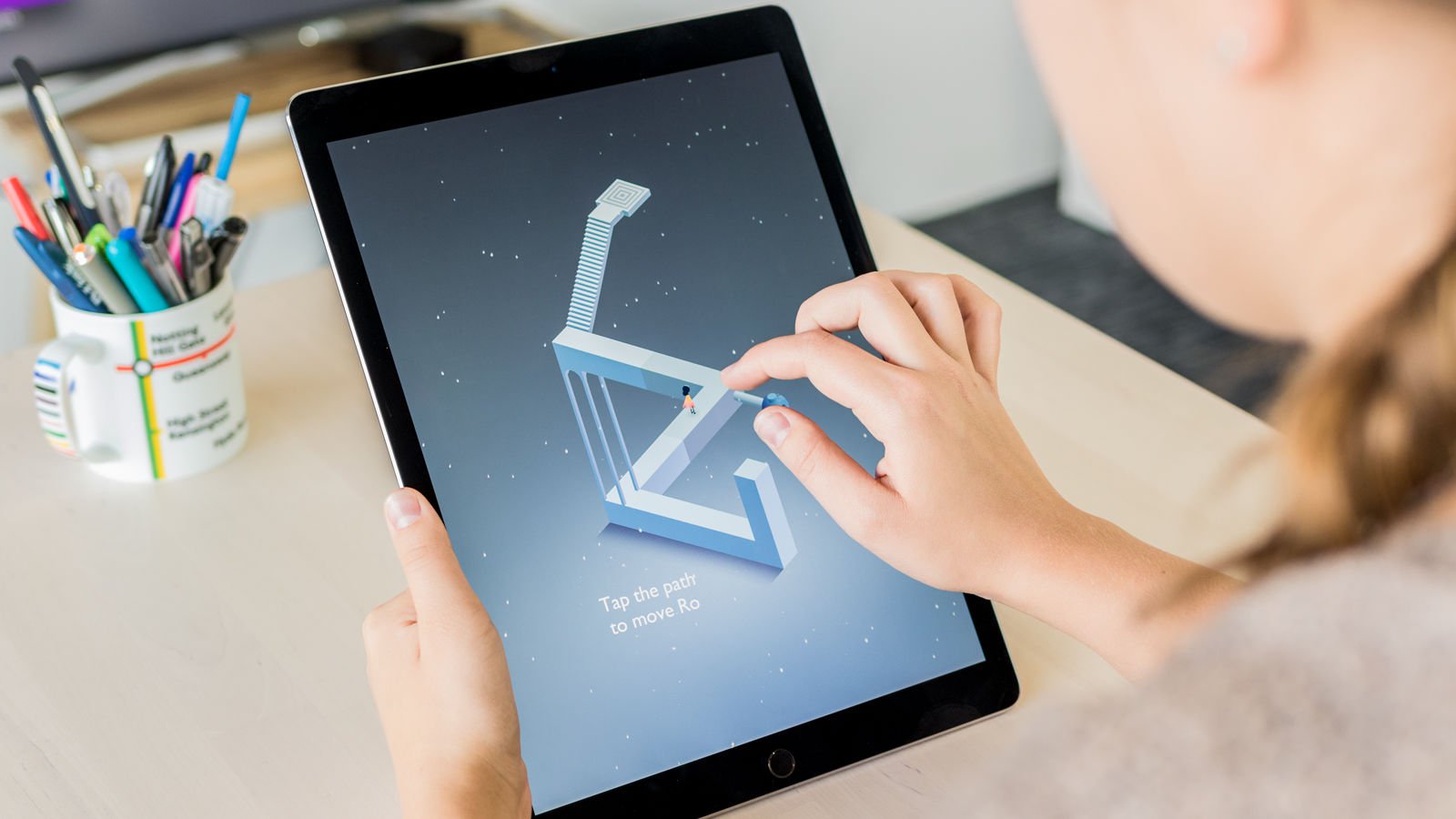
So it’s a looker. But are the internal changes to the iPad Pro enough to make it worth the asking price?
Headline specs
The unit measures 305.7 x 220.6 x 6.9mm. 6.9! It’s wonderfully thin for what is a very advanced computer. It’s powered by Apple’s A10X Fusion chip, a variation on the A10 chip used in the iPhone 7 and 7 Plus. Paired with 4GB RAM it runs superbly, a result of Apple’s excellent optimisation of hardware and software.
The storage options are different from last year, with 64GB now being the entry-level model. You can up it to 256 or 512 if you want, but it will cost you. It does mean that taking the hit now will set you up admirably for the coming years. It’s an iPad to indulge in, safe in the knowledge that it’ll still run very well two or three years down the road. In my testing it did not lag for even a second.
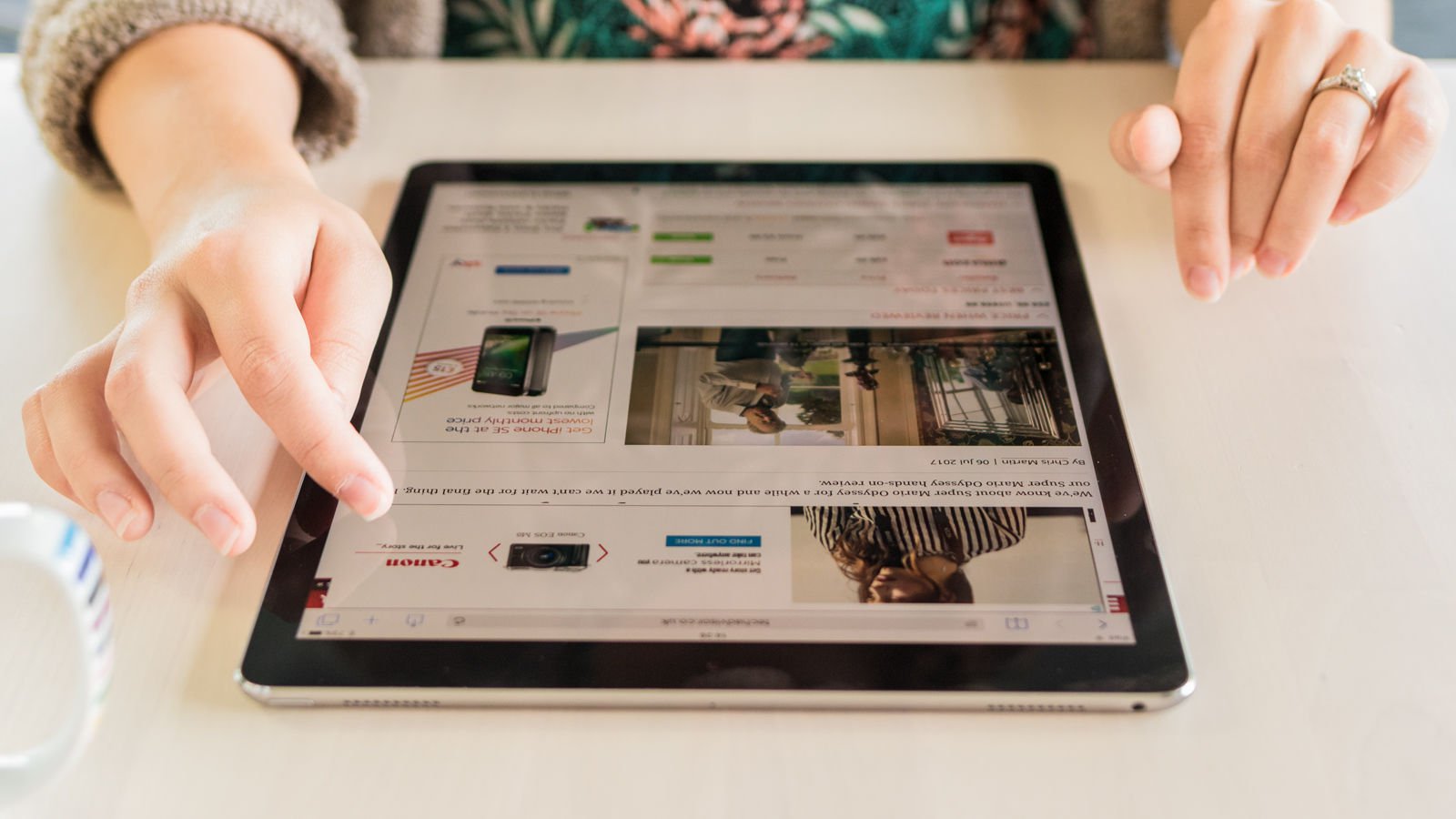
Display
The display is a sensuous 2732 x 2048 resolution with 256 pixels per inch. It is improved for 2017 with what Apple calls ProMotion, screen tech that can achieve refresh rates of up to 120Hz. This is insanity on an iPad, but it makes a massive difference on a machine that relies at its most advanced on quick rendering and fluidity of input from finger and Pencil alike.
Scrolling looks incredibly slick and with the addition of the True Tone display previously not on the 12.9-inch model, you have one seriously capable slab. True Tone was introduced on last year’s 9.7-inch iPad Pro (RIP) and adapts your iPad’s screen to the most realistic colour possible depending on the light. Apple lets you toggle it on and off to show the benefits, and trust me – you’ll keep it on.
HD video streaming on several platforms looks phenomenal, no doubt a result of the resolution and ProMotion working in tandem. Video rendering in high-intensity applications also benefits massively, and designers will see their creations come to life in ways that simply don’t present themselves on a smaller display.

Brightness is well managed by the ambient light sensor, though it’s hard to read in direct sunlight and despite the decent oleophobic coating, it’ll pick up some pretty smudgy prints.
Unlike the standard iPad, the iPad Pro’s screen remains fully laminated, meaning touch input is directly onto a screen rather than operating it on glass with a gap between you and the panel.
It only adds to the premium feel of the display. Just don’t drop it. I don’t see many cracked iPad screens, but the size of this one leaves it susceptible to a potential major repair job.
Cameras
There are also massive camera improvements, not that it’s socially acceptable to use a 12.9-inch screen as a viewfinder. Apple has done this for professionals for scanning documents, photographing in-studio and other handy things, so it’s not a useless upgrade.
The 12Mp sensor is the same as in the iPhone 7 and works amazingly well, with Live Photos, optical image stabilisation, digital zoom up to 5x and 4K video recording. Little things show themselves in use, like how panoramas are easier to achieve as opposed to relatively pokey iPhone screens. It’s impressive but probably adds to the price along with the improved display tech.
It shows excellent detail on this photo of St Pancras in London, while close ups give good low light reproduction with auto HDR.

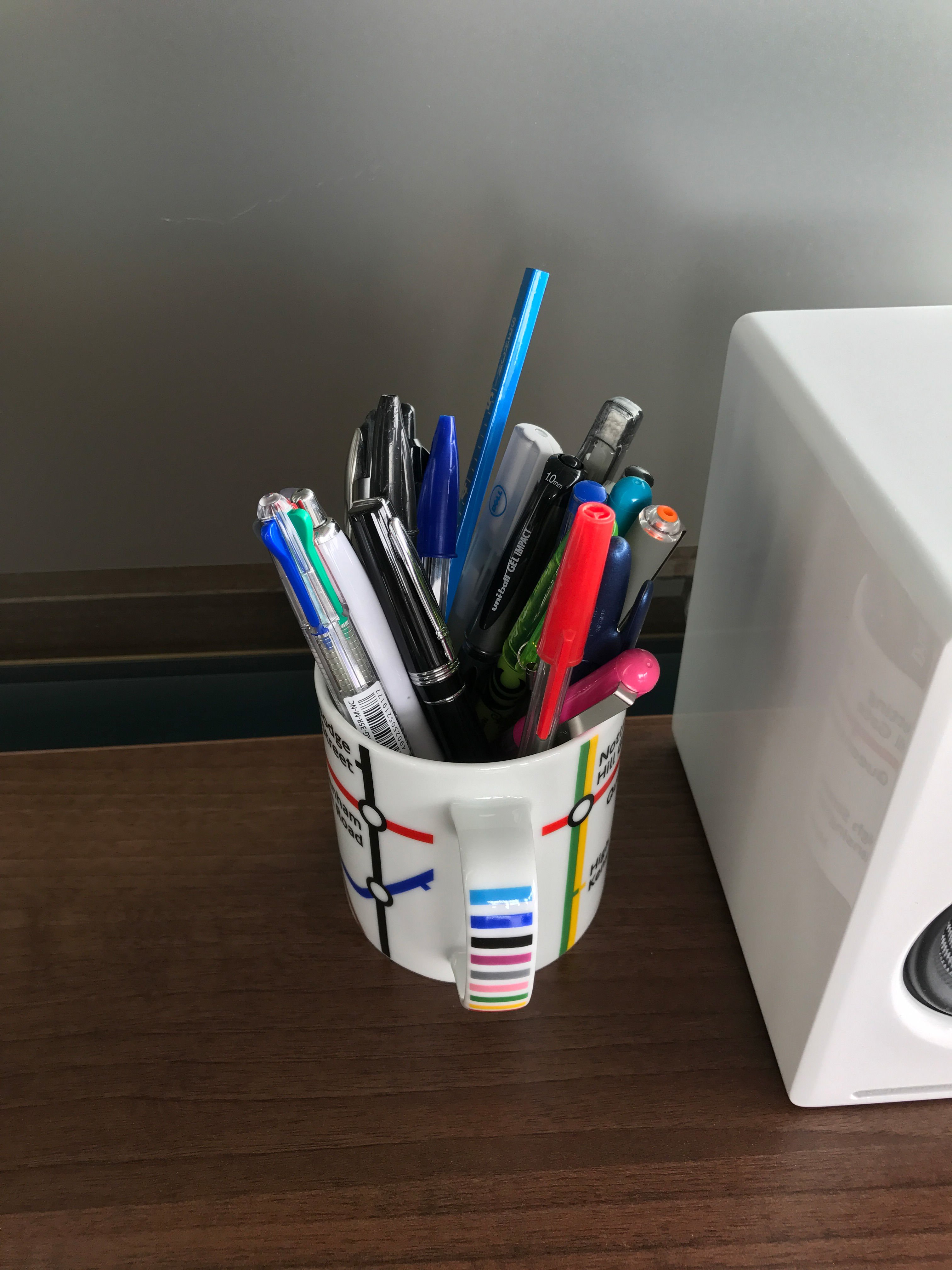
The front facing camera is a 7Mp HD sensor so rest assured; it’s just as good for FaceTime as every other iPad out there.
Audio
The iPad Pro has the advantage of four speakers compared to the iPad and iPad mini 4. While not truly room-filling, they are superb for the size of the unit and will keep you happy on solo or small group viewing on Netflix, FaceTime or YouTube. Music reproduction is fine, but not party-worthy. You’ll have to wait for the HomePod for that.
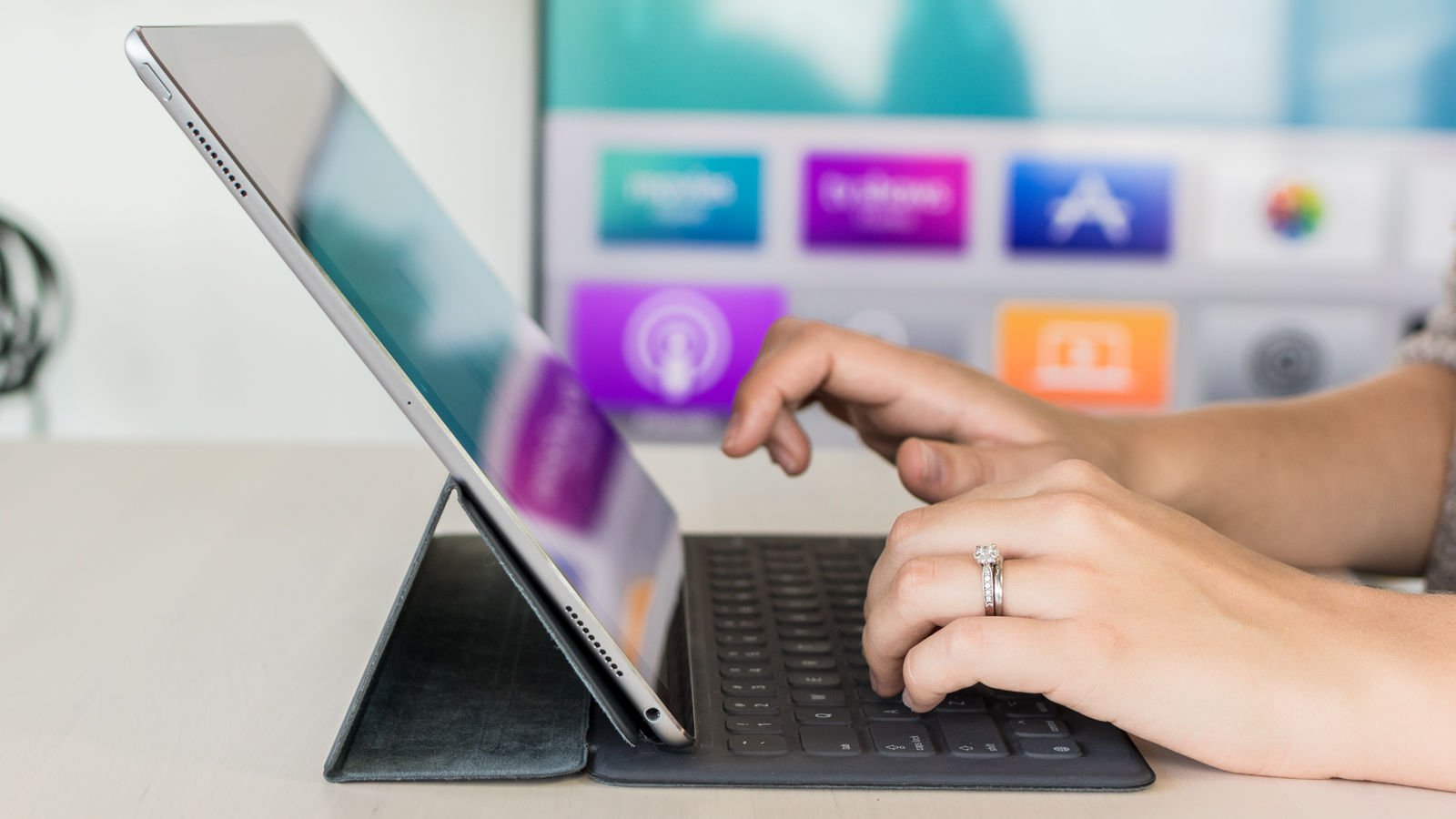
There are also dual microphones that work for calls and video and audio recording. They are decent for the former, but for the latter you won’t want to rely on them for anything above casual filming or note taking.
Battery life
Battery life on the 12.9-inch iPad Pro is quite pleasing, though it"s still not the powerhouse you might expect for the price. Apple stuffs a decent-sized 41-watt-hour battery into the chassis that"ll carry you through a heavy work day much more satisfyingly than the phone in your pocket will.
But it takes a long time to recharge, even with the supplied charger. If you have the 29W charger Apple ships with its USB-C MacBooks then you can invest in a USB-C to Lightning cable to charge your iPad faster. But that is an expensive faff.
Also bear in mind that charging the Pro while using it is not ideal, and you"ll hover around the same percentage point forever. You"ll need to build overnight charging into your routine.
Benchmarks
All of this amounts to a blisteringly fast tablet. Some phones need 8GB RAM just to make Android acceptably fast, but the iPad Pro only has 4GB. It never stutters, and performs practically the same as the also-new 10.5-inch model.
Here I benchmarked it against that iPad, last year’s 9.7-inch iPad Pro and 2015’s original 12.9-inch. Also I’ve included some results for Huawei’s MateBook E 2-in-1 (Core i5) and the latest high-end Microsoft Surface Pro (Core i7) for good measure.
Processes differ between the full Windows 10 desktop experience on the Surface Pro, but notice how the mobile OS in iOS holds a candle to Microsoft’s Core i7 speeds. It’s impressive, but the iPad is still limited in what you can do with it because of the operating system’s closed nature. Perhaps access to the file system in iOS 11’s Files app will bring new working methods, but until we are able to test it extensively, it’s speculation.
Software
Whether or not you should buy this iPad comes down to whether or not you can cope with iOS 10 masquerading as a full desktop operating system. Apple announced iOS 11 at WWDC in June 2017, but it won’t have a full stable release until around September.
While the public beta is available, it is not very stable and you shouldn’t download it onto your primary device. For now, we must toil with iOS 10. While not unworkable, if you are intending to replace a desktop OS machine with the iPad Pro, you’ll get frustrated. End of.
Things you take for granted like easy multi-window and window overlays are not present. Multi-window on iOS 10 is just two side-by-side apps in full screen. It’s fine if you are in a meeting and want a browser and your email open, but for a full-on workflow it’ll make you go a lot slower.
Perhaps in my capacity as a writer I am experiencing annoyances that won’t apply to everyone, but with the lack of drag and drop (coming with iOS 11) and mouse control (never coming, obviously) it requires a big mental shift to make it work.
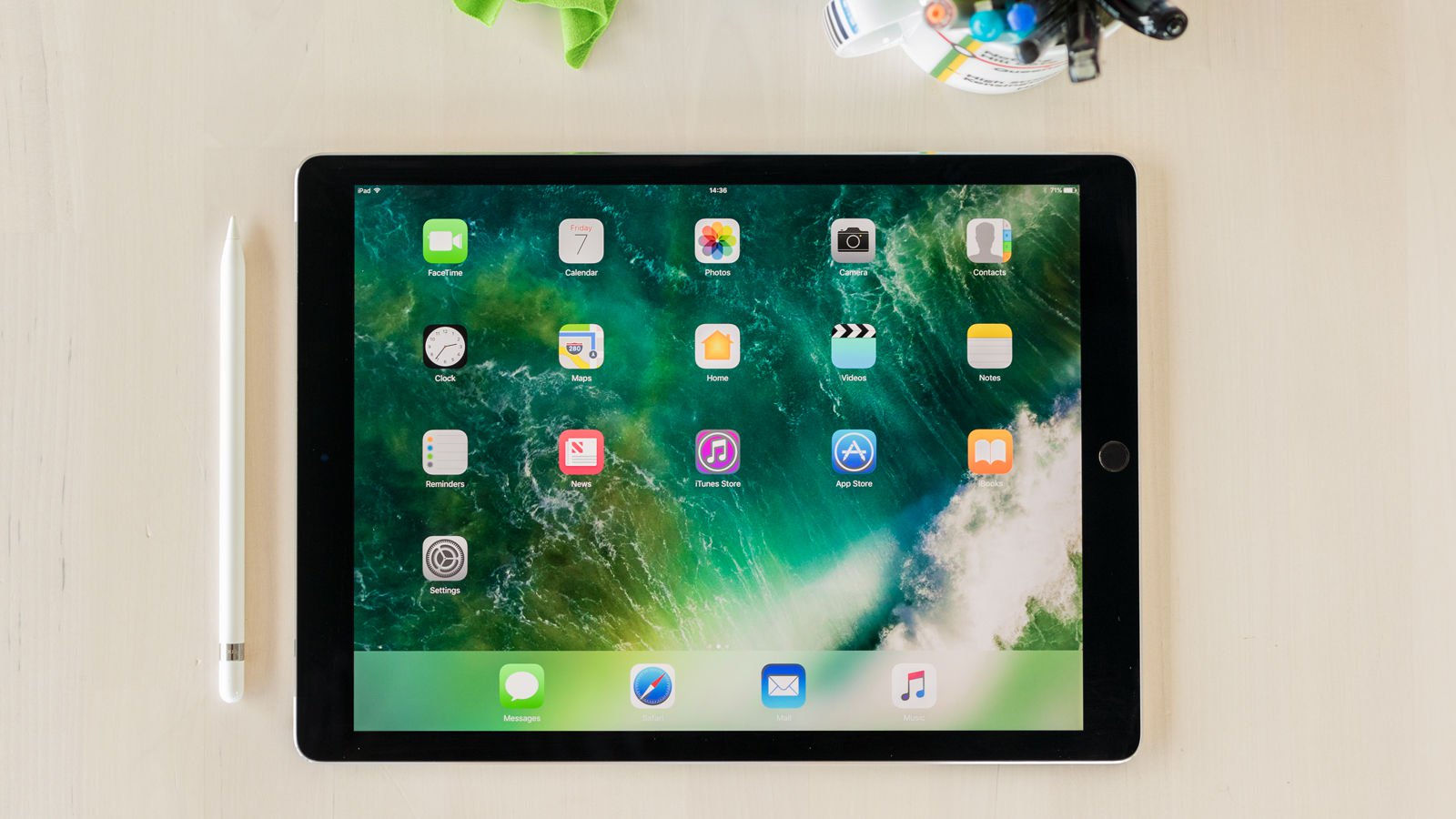
iOS 10 often presents the 12.9-inch iPad as an enormous iPhone in the way the system works, and it isn’t very efficient. The iPad Pro works best when using a third party app like Concepts with the Apple Pencil to create drawings, designs and 3D modelling.
In these instances, it is a stunning, probably unrivalled design tablet with top class hardware and software implementation allowing you to achieve things unimaginable in this form factor even five years ago.
At its worst, the iPad Pro flat out annoys. It’s easy to see why Apple is crawling away from the laptop comparisons and pushing its MacBook line again for people who want to do laptop things.
Even simply word processing on the iPad Pro lulled me into a false sense of security before I flapped about for the non-existent trackpad. Or the times I tapped on the screen trying to minimise a window a la Windows 10 touchscreen laptops before remembering I had to hit the home button.
It’s all stuff that will come with time and if you’re determined to create the right workflow around the iPad Pro then you’ll make it work. But you’re going to have to really want to, and you’re going to have to re-train your brain. Whether or not that’s worth the initial bother and expense is up to you.
The fact remains that if you don’t need to use the Apple Pencil then there are very few instances where the iPad Pro and Smart Keyboard combo is preferable to a similarly powerful laptop. Like a MacBook.
No comments:
Post a Comment